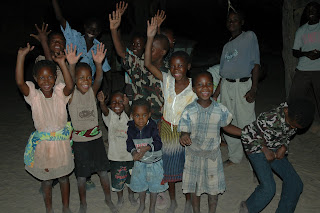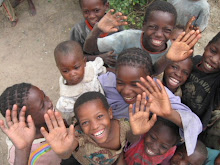
Habitat for Humanity Global Village short-term build
Zambia, November 2008
More photos of the HFH Global Village build in Zambia and our adventures in Botswana/around Zambia can be found at:
www.picassaweb.google.ca/littledrummergirl1
Zambia, November 2008
Thanks for your patience everyone, here is my report on the GV build I was part of in Zambia. As we did not have internet access (let alone power), I have used my written journal as a record for this online post. I've also included the link for Picassa, where I’ve posted all the photos from the project, as well as additional pics from our extended stay in Zambia (not part of the project) for those of you who may enjoy some African scenery and safari shots. For the purpose of this blog I often refer to Habitat for Humanity as ‘HFH’ and Global Village as ‘GV’.
***When you get to the bottom of this page it is not the end...the blog continues! Please click on 'older posts' under the last photo to see more entries. Thank you!
More photos of the HFH Global Village build in Zambia and our adventures in Botswana/around Zambia can be found at:
www.picassaweb.google.ca/littledrummergirl1
(Photo above: Gracious holding an infant)
***
THANK YOU FOR BEING PART OF THIS JOURNEY!
On behalf of the families in Zambia and with my own gratitude, thank you once more for your support! It has been an unforgettable experience and I hope this blog helps you to feel a part of this amazing project and know how together with organizations like Habitat for Humanity,
we can ALL truly make a difference in peoples lives!
Miranda
***
Team liftoff & the Journey to Zambia begins...
Nov 6th 2008

After over 30 hours of flying, airport transfers and waits, we finally arrived in
Lusaka, Zambia to meet the HFH affiliate staff, Charity, and pick up our supplies
including 600 liters of bottled water, and then head out for our build destination…
When we arrived in the village of Numunga we were greeted warmly with cheers, songs and introductions to everyone. That evening the children performed dances and songs for us. Their enthusiasm and energy was infectious and it seemed to give us just the right boost to begin the build project.
The village of Namununga is basically made up of a series of sandy paths connecting cris-cross to hundreds of tiny round thatch roof homes made of clay and small farms spread out over a few kilometers.


Mr. Wilson, the patriarch of the family and owner of a home built by another HFH GV project, graciously offered to accommodate our 11 member team. He and his family vacated to his daughter’s home next door for the duration of the build.
Simon, Mr. Wilson & Bruce
We managed to squeeze into the tiny rooms, sleeping on mats with our mosquito nets. Being unfettered by bugs and 8 legged creepy crawlys, I gladly took the window spot and got plenty of fresh air (and a little harmless rain too!).

They were wonderful hosts and we enjoyed being their guests and their welcoming us to take part in daily activities and chores, my favorite of which was cooking and spending time with the women in their round ‘boma’ style kitchens.

With Avery and Fidas in the kitchen
There was no electricity, running water or plumbing, although within 300 meters there was a bore hole with a manual pump which we were told had been previously built by an NGO (non-governmental organization), which the children were eager to show us how to use and often argued with each other over who would do this!


The family helped us obtain barrels of water for our solar showers, which were set up on wooden poles in shower stalls made of thatch/grass, yet another ingenious construction that worked wonderfully!

We marveled at the villager’s ability to work in the dark, or with the use of the occasional candle, which I think was lit mostly for our benefit. I loved the ambience it gave and didn’t miss ‘light pollution one iota!


Along with some more familiar food stuffs we brought (peanut butter, bread, non-refrigerated milk, roobias tea) we ate traditional African food such as ‘Nshima’ (a staple in their diet and a bi-product of corn), ‘Rape’ (a delicious green vegetable), ‘Chibwaba’ (pumpkin veggies), fresh fish from the Kafue River, and some delicious goat, chicken and eggs dishes.
I loved their mildly spicy tomato base sauce they would often ‘stew’ the meat or eggs in, made with pepper, tomatoes, paprika, oil, and occasionally curry, and loved learning about how things were prepared. As far as African rural villages go, this was about as authentic as it gets and I was excited to have the opportunity to be a guest there!

Fidas & Avery preparing fresh fish for dinner




No comments:
Post a Comment